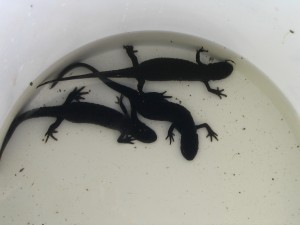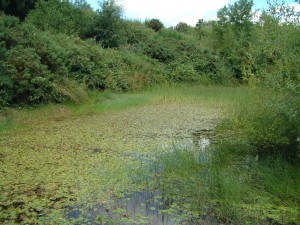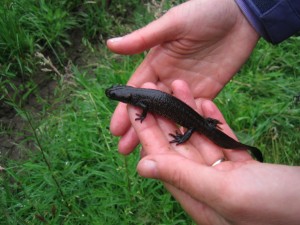Great Crested Newt Surveys
 Great crested newts (GCN) are protected under European and UK legislation. They are rare and threatened at an international level but some parts of lowland Britain support large populations and because of their habitat requirements they are often found on sites intended for development.
Great crested newts (GCN) are protected under European and UK legislation. They are rare and threatened at an international level but some parts of lowland Britain support large populations and because of their habitat requirements they are often found on sites intended for development.
Adult newts spend much of their lives on land, using habitats such as rough grassland, woodland and scrub, and only return to their ponds to breed. They may use suitable habitats some distance from their ponds, and for this reason it may be necessary to survey ponds up to 250 metres away from a development, or even up to 500 metres for some types of project.
GCN sometimes use unconventional waterbodies for breeding, for example we have recorded  them in quarry lagoons, plastic-lined fire ponds and even swimming pools and water storage tanks. The first step in assessing whether GCN are likely to be using a pond or other waterbody is usually to carry out a Habitat Suitability Index (HSI) assessment; this can be done at any time of year and it gives an indication of the risk of GCN being present.
them in quarry lagoons, plastic-lined fire ponds and even swimming pools and water storage tanks. The first step in assessing whether GCN are likely to be using a pond or other waterbody is usually to carry out a Habitat Suitability Index (HSI) assessment; this can be done at any time of year and it gives an indication of the risk of GCN being present.
If the HSI findings indicate that a ‘presence/absence’ survey is necessary, up to four survey visits are then required, using several techniques. If GCN are found, a further two survey visits (six in total) may be needed to assess the size of the population, particularly if a ‘development licence’ application is to be submitted in order to carry out mitigation work.
Newt surveys need to be carried out during the breeding season, between March and June  and with a specified number of visits to be carried out during the ‘peak’ breeding season between mid-April and mid-May. Jan Wilkinson is licensed and highly experienced in carrying out GCN surveys as well as surveys for other amphibians, including Natterjack Toads.
and with a specified number of visits to be carried out during the ‘peak’ breeding season between mid-April and mid-May. Jan Wilkinson is licensed and highly experienced in carrying out GCN surveys as well as surveys for other amphibians, including Natterjack Toads.
A recent development is the introduction of ‘Environmental DNA’ testing to assess the presence of GCN. Use of the technique is still in its infancy but in some instances it may enable a single site visit to be carried out for presence/absence surveys. Please contact us if you would like further details of this new technique, which must be carried out during the breeding season.
If the presence of GCN is confirmed on site, a licence may be required before any development work can proceed on the site. Wilkinson Associates can assist with the design, licensing and implementation of mitigation schemes.
Return to Protected Species



